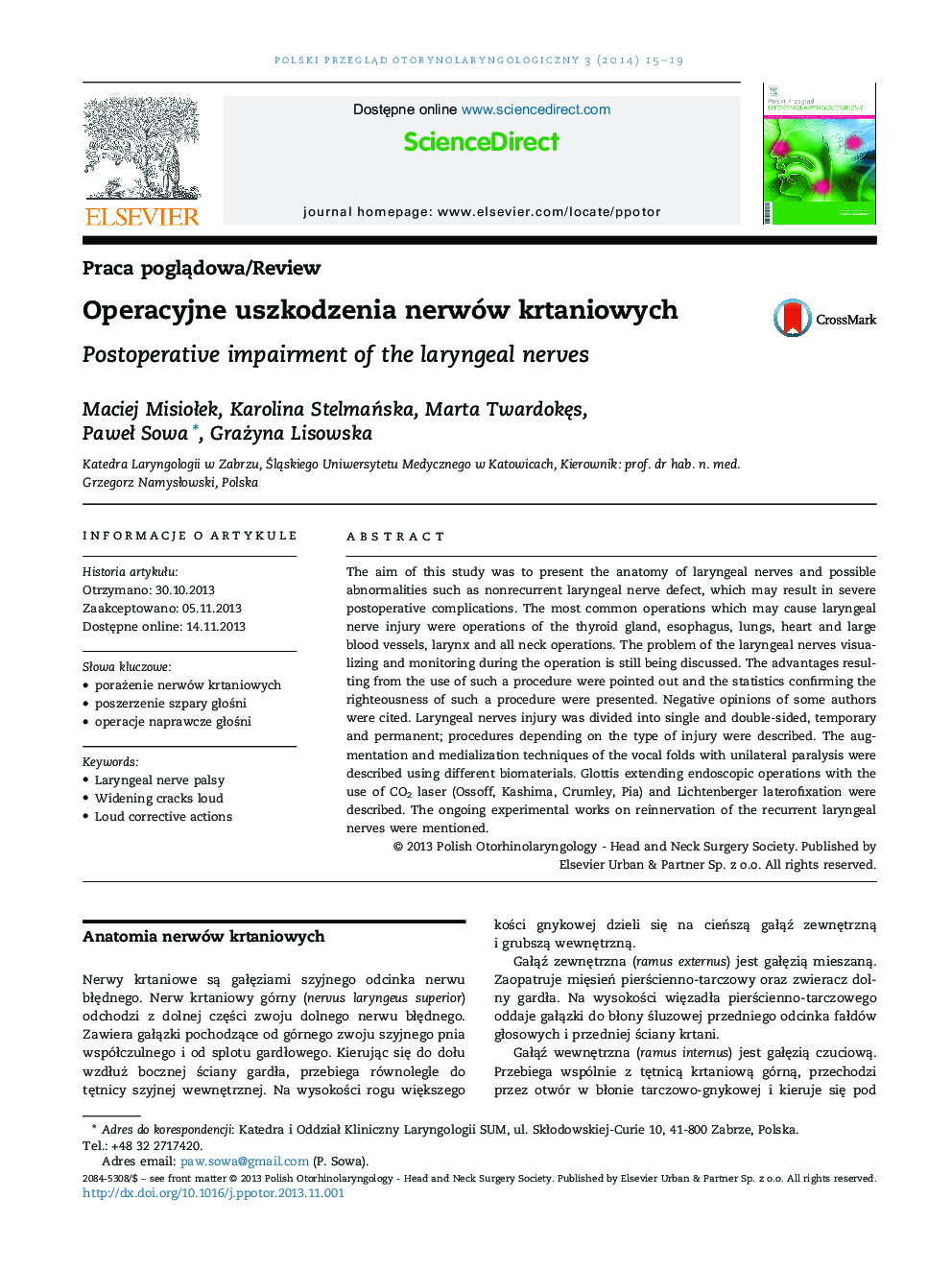| Article ID | Journal | Published Year | Pages | File Type |
|---|---|---|---|---|
| 3171936 | Polski Przegląd Otorynolaryngologiczny | 2014 | 5 Pages |
Abstract
The aim of this study was to present the anatomy of laryngeal nerves and possible abnormalities such as nonrecurrent laryngeal nerve defect, which may result in severe postoperative complications. The most common operations which may cause laryngeal nerve injury were operations of the thyroid gland, esophagus, lungs, heart and large blood vessels, larynx and all neck operations. The problem of the laryngeal nerves visualizing and monitoring during the operation is still being discussed. The advantages resulting from the use of such a procedure were pointed out and the statistics confirming the righteousness of such a procedure were presented. Negative opinions of some authors were cited. Laryngeal nerves injury was divided into single and double-sided, temporary and permanent; procedures depending on the type of injury were described. The augmentation and medialization techniques of the vocal folds with unilateral paralysis were described using different biomaterials. Glottis extending endoscopic operations with the use of CO2 laser (Ossoff, Kashima, Crumley, Pia) and Lichtenberger laterofixation were described. The ongoing experimental works on reinnervation of the recurrent laryngeal nerves were mentioned.
Related Topics
Health Sciences
Medicine and Dentistry
Dentistry, Oral Surgery and Medicine
Authors
Maciej MisioÅek, Karolina StelmaÅska, Marta TwardokÄs, PaweÅ Sowa, Grażyna Lisowska,
